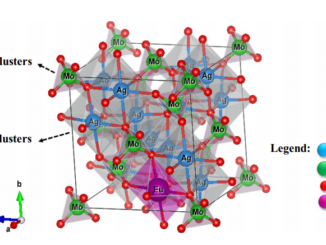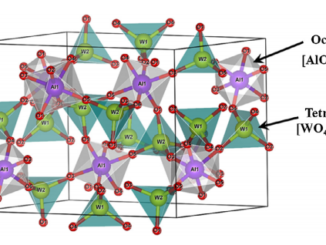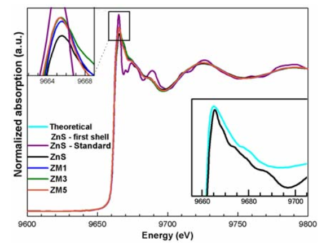
Influence of Cu substitution on the structural ordering, photocatalytic activity and photoluminescence emission of Ag3-2xCuxPO4 powders
Abstract: Materials presenting high photocatalytic performance and interesting photoluminescence emissions are promising candidates for photodegradation of organic pollutants discharged into natural waters as well as for development of new electro-optical devices, respectively. In this study, Ag3-2xCuxPO4 (x = 0.00, 0.01, 0.02, 0.04 and 0.08) powders were synthesized by the precipitation method. The long- and short-range structural ordering was affected when the copper (Cu) content was increased in the lattice, as identified by X-ray diffraction patterns, Fourier transform infrared spectroscopy and Raman spectroscopy, respectively. The field emission scanning electron microscope and transmission electron microscope revealed a particle system composed of irregular spherical-like microcrystals. The presence of Cu as well as its real amount in the samples were confirmed by means of X-ray photoelectron spectroscopy and inductively coupled plasma-atomic emission spectrometry, respectively. On increasing Cu level, a slight variation was noted on the photocatalytic activity of Ag3-2xCuxPO4 powders for degradation of rhodamine B under visible light irradiation. A photodegradation mechanism was proposed in details. The photoluminescence emissions were explained by electronic transitions involving intermediary energy levels in the band gap. The origin these energy levels was related to defects caused by the substitution of Ag by Cu in the crystalline structure.
Authors: Wyllamanney da S. Pereira, Júlio C. Sczancoski, Yormary N.C. Calderon, Valmor R. Mastelaro, Gleice Botelho, Thales R. Machado, Edson R. Leite, Elson Longo.
Applied Surface Science
Volume 440, 15 May 2018, Pages 61-72
DOI: https://doi.org/10.1016/j.apsusc.2017.12.202




